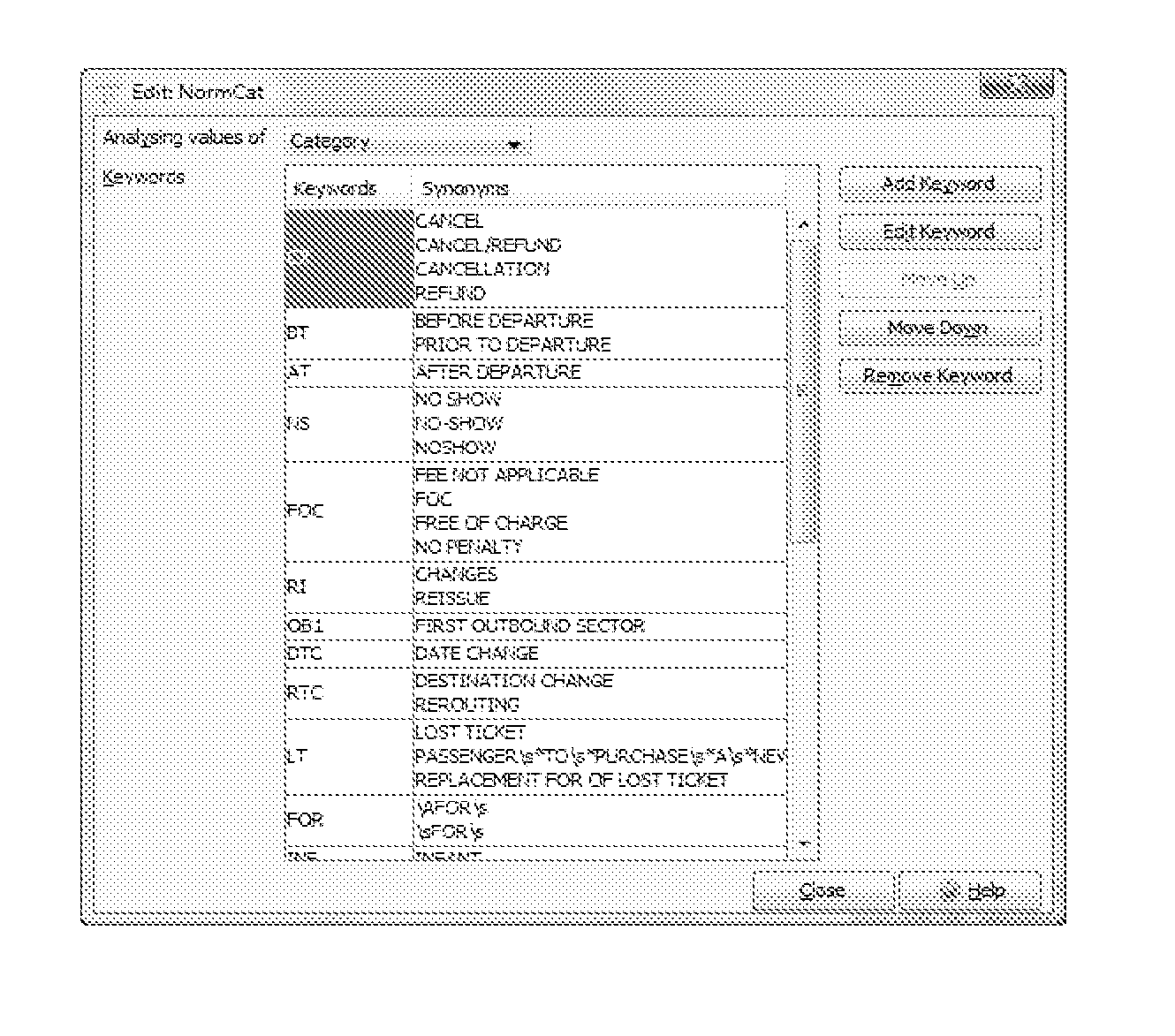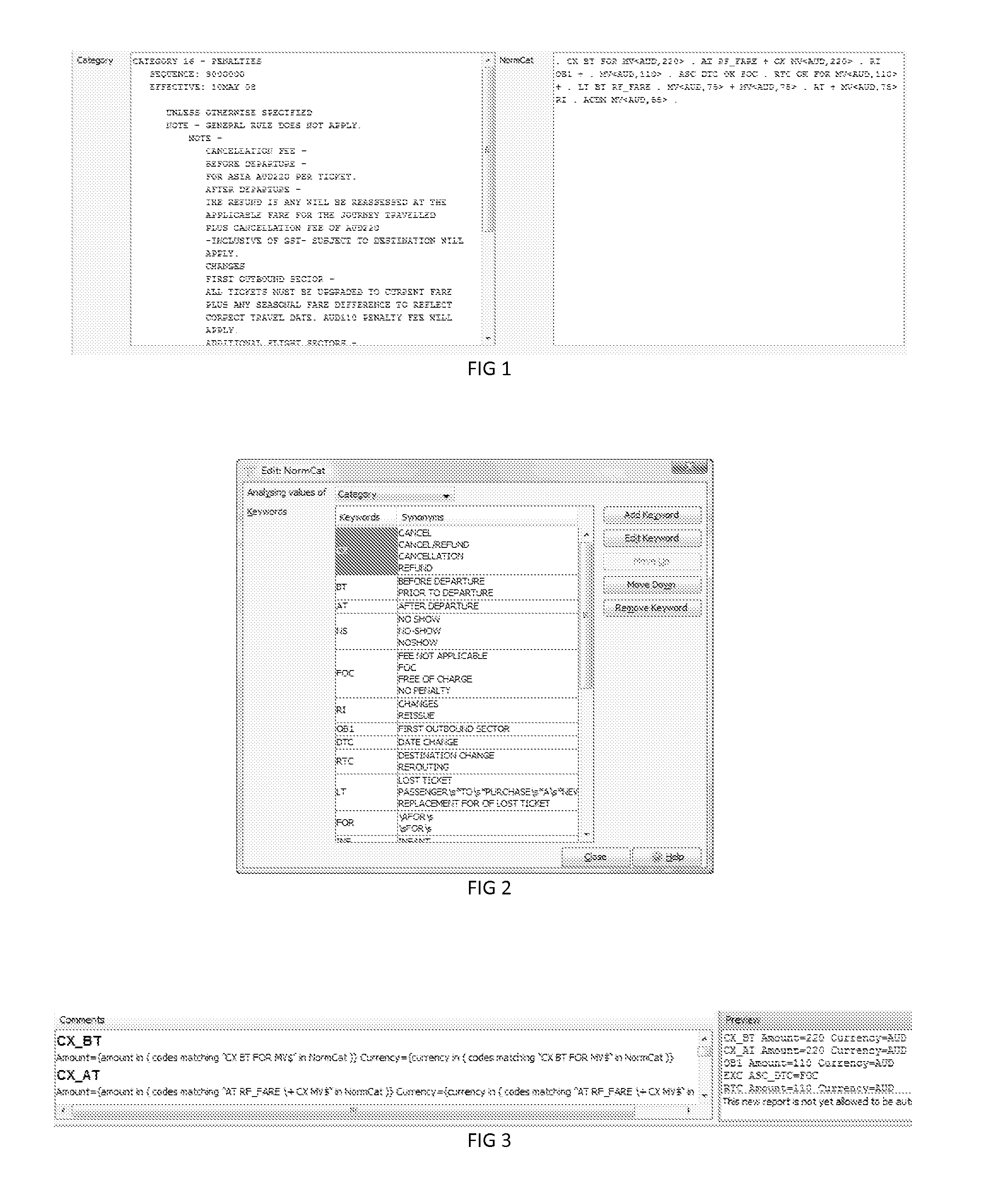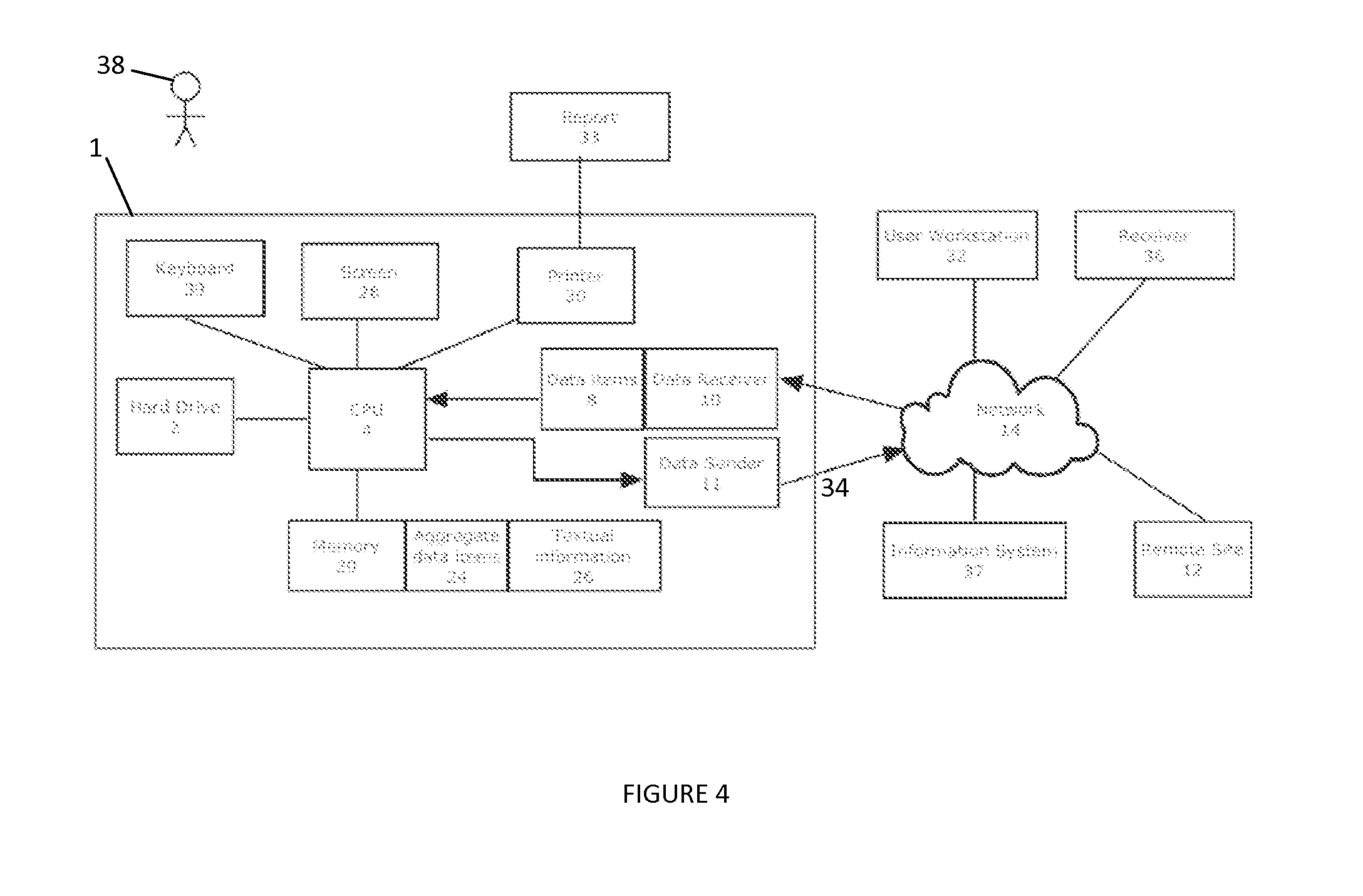Method and system for generating text
- Summary
- Abstract
- Description
- Claims
- Application Information
AI Technical Summary
Problems solved by technology
Method used
Image
Examples
example 1
[0444]A first example application is a leukaemia report knowledge base where diagnosis is performed using hundreds of tests whose values are determined by a micro array of hundreds of protein expression or gene expression markers. An expert may build a diagnosis and report knowledge base that identifies the subsets of relevant markers, the diagnosis corresponding to this pattern, and comments for those significant subsets in a textual report to the referring medical practitioner.
[0445]The array test results are provided as inputs to the knowledge base as a plurality of data items and value pairs. The data items are, in this example, labelled CD1 to CD100 to identify them, indicating 100 elements to the array. Real-world examples may contain several hundreds of markers.
[0446]In this example, a value for one of the data values of less than 50 means that there is no expression of the antibody corresponding to that marker for that patient sample. A value greater than 50 is possibly sign...
example 2
[0495]Another example application is an allergy report knowledge base where there are potentially 500 or more IgE tests that can be performed. The task of the allergy expert is to advise the referring doctor which subset of the tests performed have significant result values for the patient, which test values may not be significant, which tests need to be followed up, including which of the 500 possible tests, should be also be performed as follow up.
[0496]One example solution:[0497]From the total collection of possible data item names, to group those data item names into aggregate data items based on domain-specific rules, e.g. significant pollen Attributes, and case-specific rules.[0498]To use any of the characteristics of an aggregate data item as the basis for further rules and / or comments. For example, give a particular comment if the number of elements of an aggregate data item is above a certain number, or if the set includes a particular element.[0499]To use one or more aggre...
example 3
[0511]A third example application is a knowledge base used to interpret airline ticket faresheets and determine the conditions under which a ticket may be re-issued such as:[0512](a) start and destination cities; and[0513](b) what penalty fees may apply.
[0514]A second knowledge base is used to interpret the re-issued tickets to determine the actual fees paid and the start and destination cities.
[0515]A third knowledge base will interpret the outputs of the other two knowledge bases and determine if the re-issued tickets complied with the conditions of their faresheets.
[0516]Considering just the first knowledge base, a fragment of the freeform text in a faresheet could be as follows:
PENALTIES - 16- NOTE - GENERAL RULE DOES NOT APPLY NOTE -CANCELLATION FEE -BEFORE DEPARTURE - AUD110 PER TICKET.AFTER DEPARTURE THE REFUND IF ANY WILL BE ASSESSEDAT THE APPLICABLE FARE FOR THE JOURNEY TRAVELLEDPLUS AUD 75 ADMINISTRATION FEE WILL APPLY.CHANGES-FIRST OUTBOUND SECTOR-ALL TICKETS MUST BE UPGR...
PUM
 Login to View More
Login to View More Abstract
Description
Claims
Application Information
 Login to View More
Login to View More - R&D
- Intellectual Property
- Life Sciences
- Materials
- Tech Scout
- Unparalleled Data Quality
- Higher Quality Content
- 60% Fewer Hallucinations
Browse by: Latest US Patents, China's latest patents, Technical Efficacy Thesaurus, Application Domain, Technology Topic, Popular Technical Reports.
© 2025 PatSnap. All rights reserved.Legal|Privacy policy|Modern Slavery Act Transparency Statement|Sitemap|About US| Contact US: help@patsnap.com



